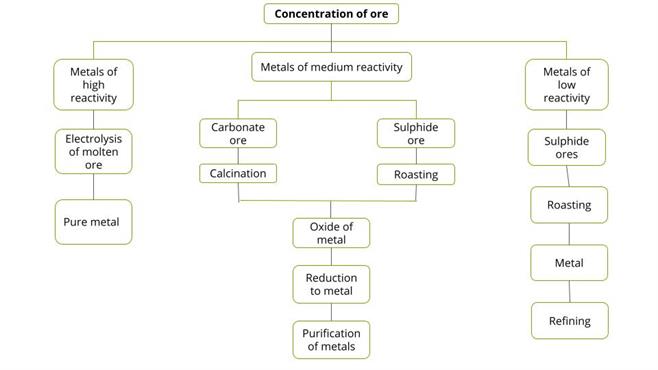PDF chapter test TRY NOW
Metal reactivity series is something you have learned about. You may readily understand how metals are extracted from their ore if you have this understanding. In their natural state, metals can be found in the earth's crust. Some can be found as their compounds.
The least reactive metals are found near the bottom of the activity scale. They are frequently found in a free state. For example, gold, silver, platinum and copper can be found in the free state. Sulphide or oxide ores of copper and silver can also be found in a combined state. In the activity series, the metals at the top (K, Na, Ca, Mg and Al) are extremely reactive and are never found as free elements in nature.
In the activity series, the metals in the middle (Zn, Fe, Pb and so on) are moderately reactive. They are mostly found as oxides, sulphides or carbonates in the earth's crust. Oxides can be found in the ores of several metals. This is due to the fact that oxygen is a highly reactive element that is abundant on the earth.
Metals | Extraction process |
Na K Ca Mg Al | Electrolysis |
Zn Fe Pb Cu | Reduction using carbon |
Ag Au | Found in native state |
Thus we can divide metals into three categories based on their reactivity.
(i) Metals of low reactivity
(ii) Metals of medium reactivity
(iii) Metals of high reactivity
To extract the metals that fall into each category, several processes will be required. The extraction of pure metal from ores involves a number of steps. In the figure, you will find an overview of these steps. The next sections will go through each step in further detail.

Enrichment of Ores
Ores extracted from the earth usually contains large amounts of impurities such as soil, sand, etc., called gangue. Impurities must be removed from the ore before the metal can be extracted. The techniques for separating the gangue from the ore are based on the physical or chemical differences between the gangue and the ore. As a result, many separation techniques are used.
